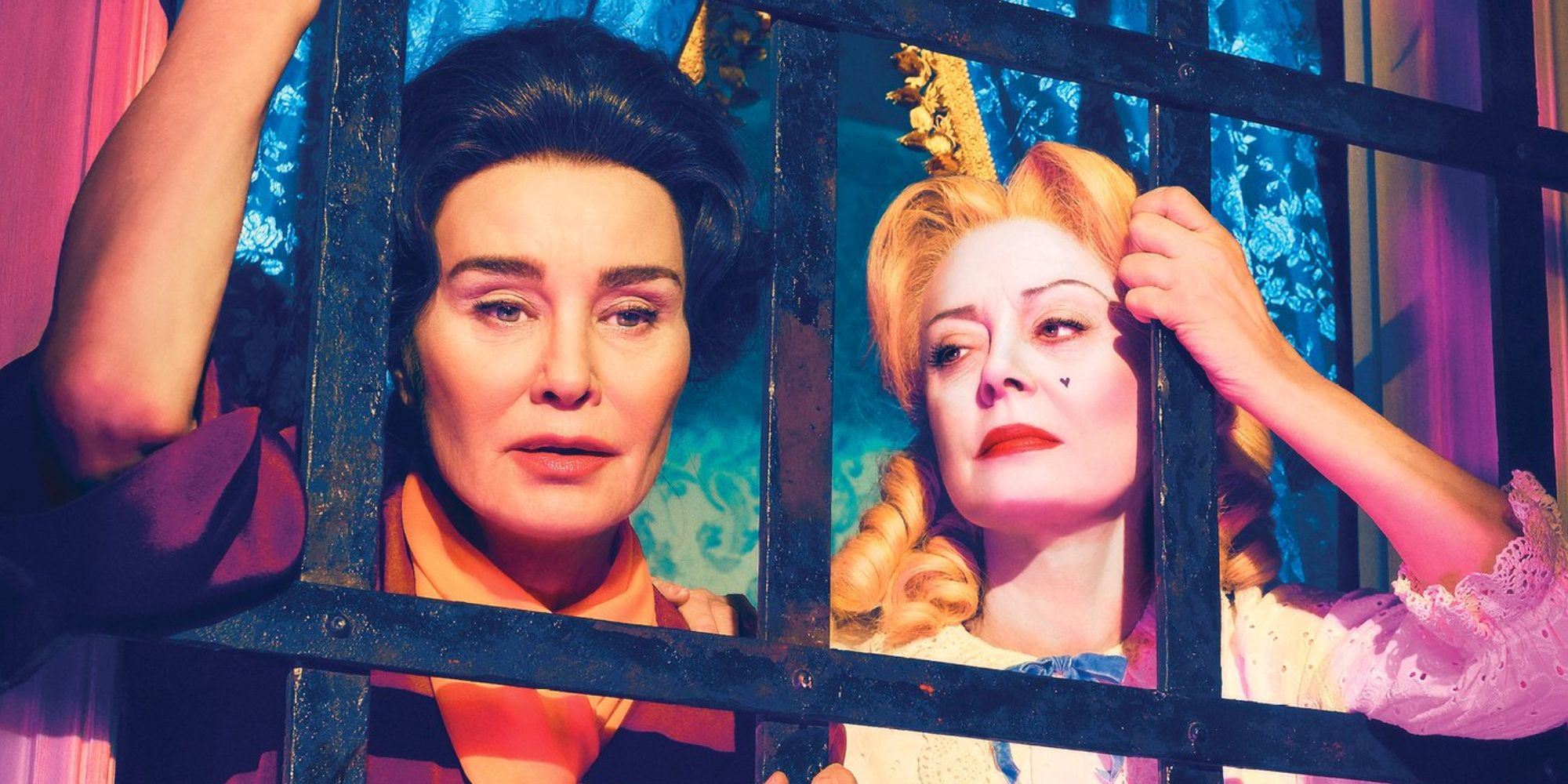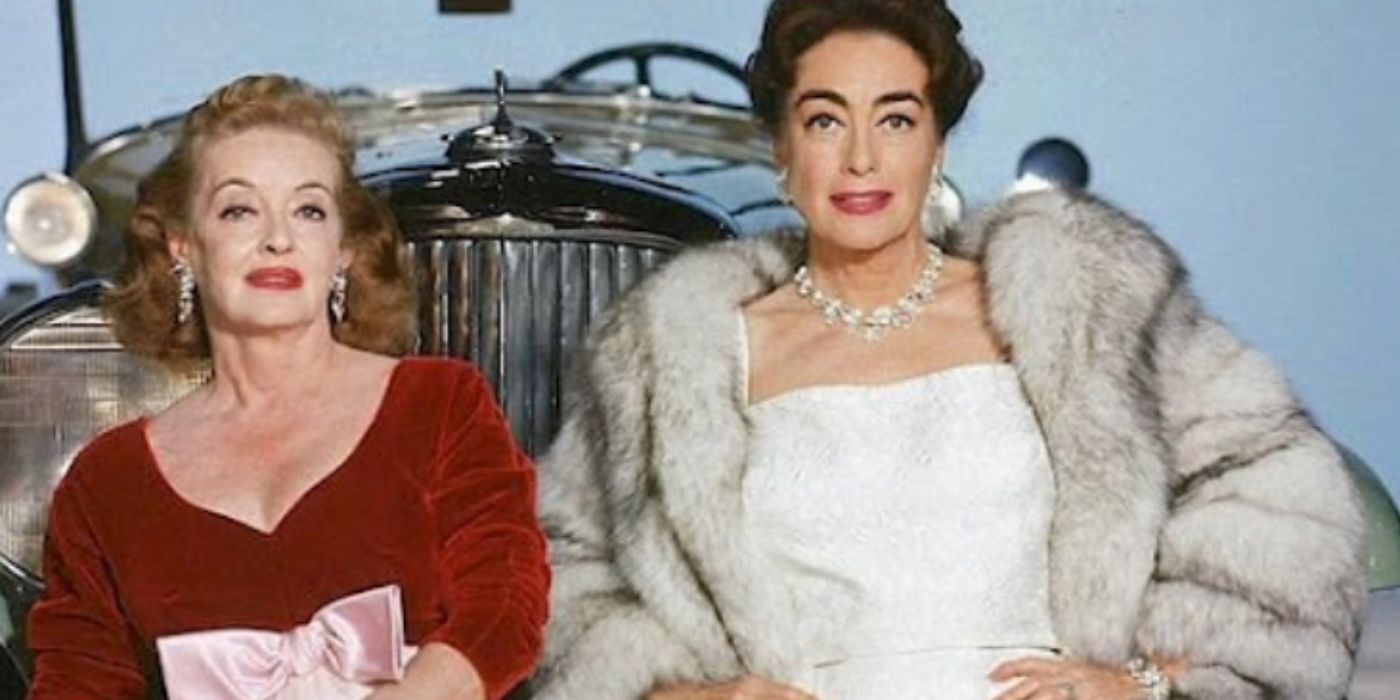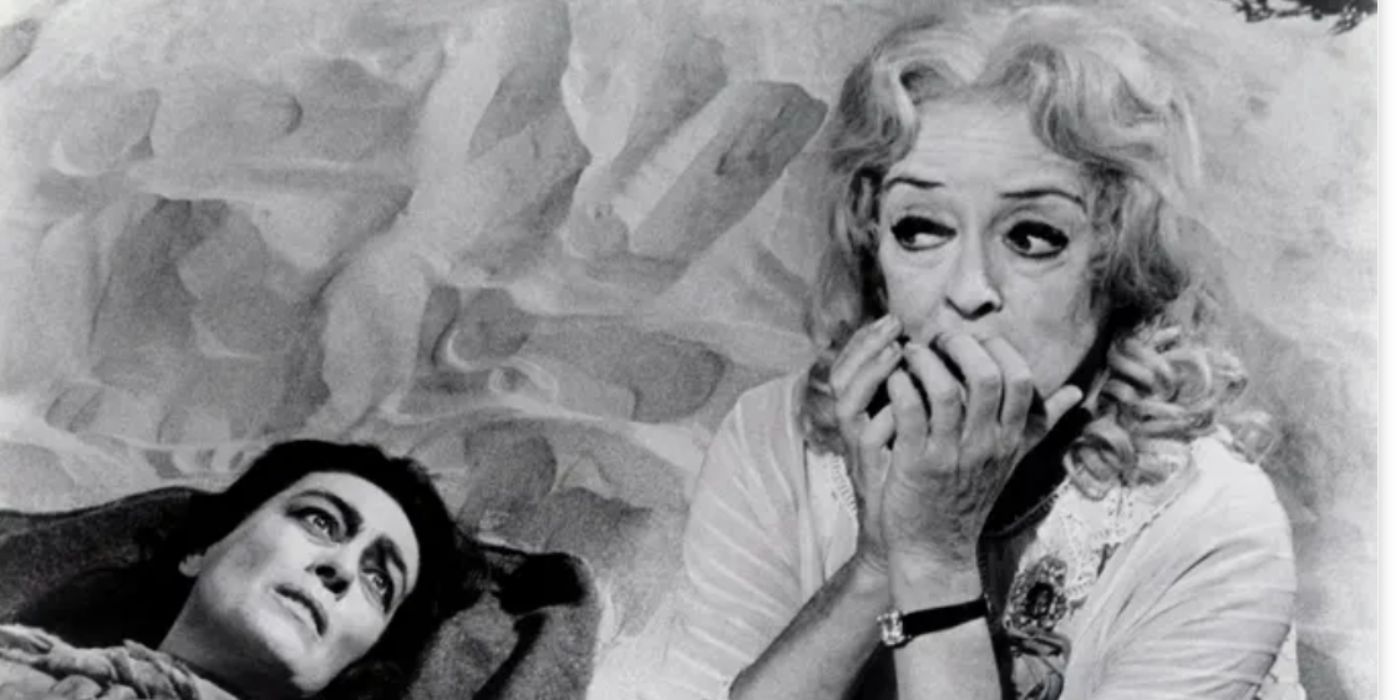The Big Picture
- Feud: Bette and Joan uncovers the deep-seated sexism in Hollywood during the 1950s and 1960s.
- The rivalry between Bette Davis and Joan Crawford fueled their critically acclaimed film, Whatever Happened to Baby Jane?
- The success of Whatever Happened to Baby Jane? shattered ageist stereotypes and opened up new opportunities for female actors in Hollywood.
In Hollywood, a fall from grace is a long fall — and in the end, the fame, the roles, and the love from strangers are all that mattered to two individuals. Joan Crawford was a legend of the silver screen, starring in films since the silent era and becoming known for her wide, Bambi-like eyes and liberated characters. Always graceful, always beautiful, she seamlessly transformed from an ingénue to a leading lady and played hardworking mothers, wives, and even cowgirls. Bette Davis was a whole different kind of Hollywood woman. Often called one of the greatest actors of all time, even during the golden age of Hollywood, everyone knew she was the best. She never had a fear of appearing unattractive or playing unlikable women in her roles, which was nothing short of revolutionary. Although Crawford and Davis could not be further from each other, they both became Hollywood legends.
Feud: Bette and Joan, Season 1 of Ryan Murphy's anthology series, does not shy from the obscene, disturbing sexism that thrived behind closed doors in Hollywood during the late '50s and early '60s. As both Davis and Crawford find that roles have all but dried up simply due to their age, they decide to create great roles for themselves. Though sworn enemies for a disputable number of reasons, their hate for each other fueled the fire for their critically acclaimed horror masterpiece, Whatever Happened to Baby Jane? It's hard to decide what received more fame — the movie, or the feud that the two had during production, which they carried into the awards season and beyond.
'Feud: Bette and Joan' Details the Sexism in Hollywood's Golden Age
Ryan Murphy makes the patriarchal prison in showbiz crystal clear in Feud: Bette and Joan, illustrating how merely existing was a battle for women in Hollywood at the time, and for aging women, it was a war. It’s not news that sexism ages in Hollywood like a bottle of fine wine as female actors progress to age. While ageism is still prevalent in Hollywood today, during the golden era, it all but ended a woman's career by the time she reached her forties. Bette Davis (Susan Sarandon) and Joan Crawford (Jessica Lange) are known as some of the greatest actors of all time, and both were some of the biggest stars during the Golden Age of Hollywood. Progressing from wide-eyed starlets to leading ladies, they won their Oscars, starred in box office smashes, ruled the tabloids, and therefore ruled Hollywood. As two of the biggest stars, they often butted heads by competing for the limelight and roles, which only intensified as they began to age and roles began to dry up. By 1960, both women found themselves on the outskirts of Hollywood, though their love for performing and showbiz was still very much alive.
When Crawford discovered a thrilling little spooky book detailing the toxic relationship between two aging sisters who used to be the brightest stars in Hollywood, but have since become recluses, she knew it was the perfect opportunity to get back in the game. Nobody believed in Crawford or Davis, nor did the studios believe the public had any interest in seeing two older women co-star in a Hollywood horror film. But Whatever Happened to Baby Jane? became a box office smash and a success among critics, even earning Davis an Oscar nomination among other nominations. But it was a nightmare to get the film greenlit, with a terror-reigning Stanley Tucci playing a raging, sexist, Jack L. Warner, head of Warner Bros. From there, production was not any easier. Crawford and Davis's rivalry was harder to control when the two women had to share dressing rooms, and most importantly, the camera. Crawford always felt inferior to Davis, as she thought critics and directors in Hollywood believed her to be a better, more serious actress. Crawford's alcoholism and unwillingness to appear anything less than beautiful, despite playing a deteriorating recluse, on top of Davis's controlling persona on set, created a storm no one was prepared to weather.
Bette Davis and Joan Crawford Had One of the Biggest On-Set Feuds of All Time
Whatever Happened to Baby Jane? was directed by Robert Aldrich, played by Alfred Molina in the series, and he has his hands tied as the women began playing their own psychological games against each other on the set of the film. Telling the story of two aging sisters who were once stars in Hollywood, Whatever Happened to Baby Jane? stars Crawford as Blanche Hudson, a wheelchair user who used to be a big-time actress, but a car crash and her controlling sister have kept her from the limelight in the years since. Davis stars as Blanche's unstable sister, Jane, who was once a child star actress on the stage, and still dresses in costumes she'd wear as a child. Jealous of her sister's fame, Jane lives in a disillusioned state while keeping her sister imprisoned in the house while Blanche's health begins to plummet. In Feud: Bette and Joan, the parallels between the characters and the actors playing them are clear. As Jane tortures Blanche on-screen with distressing mind games, Davis and Crawford tortured each other with mind games. The FX series depicts Davis reportedly making jabs at Crawford about her use of shoulder pads and lipstick, insinuating her lack of talent and relying on her looks. Crawford's use of alcohol on set also caused problems and started to impact her work.
Davis was known for being difficult with not a lot of room for collaboration, and it was always her way or the highway on set. Getting Oscar nomination after Oscar nomination, she won two Best Actress awards, for 1935's Dangerous and 1938's Jezebel. Meanwhile, Crawford won the Oscar for 1945's Mildred Pierce, a role Davis had passed on first. The head of Warner Brothers, Jack L. Warner, pulled strings to create a rivalry between the two, as he carried a hatred for Davis after she sued to get out of her Warner Brothers contract at the end of the '30s. Davis carried the trauma Warner inflicted upon her for the rest of her career, and Warner reveled in pitting the two women against each other as they fought for scraps as roles dried up. By the time they were on Whatever Happened to Baby Jane?, they couldn't even remember why they hated each other.
So hungry for the spotlight and recognition after years on the sideline, Davis and Crawford did not just fight on the set, but in the headlines as well. At a time when gossip columns in Hollywood were even bigger than shows in The Real Housewives franchise today, both ladies would divulge secrets and scandals to the notorious Hedda Hopper, played by Judy Davis in the series. Hopper could make or break a career, and as the women campaigned for top billing, and then award recognition, her articles were bloodstained by a war waged by the two stars. Director Aldrich even met with Hopper and fed her false rumors that further pitted the women against each other. As the Blanche sisters' relationship escalates toward murder, Davis and Crawford's feud reached dangerous heights. In one infamous scene, Jane kicks Blanche several times while she's down, and Crawford claims Davis really did kick her. Whether or not Davis actually kicked Crawford is one of the many disputed myths that occurred on set, but production wound up being a cakewalk when golden statues came calling.
Though the film was triumphant at the box office, with critics hailing it as a chilling horror story with Davis and Crawford back at the top of their craft, at the end of the day it was still all about winning. Just because filming was over, did not mean the feud was even close to being done. Awards season in Hollywood is bloodier than any battle scene in any movie, and the drama of snubs and wins during the Golden Age makes today's awards look tame. Davis received a nomination for Best Actress at the Academy Awards, and it made the rivalry between Davis and Crawford even stronger. Confirming what Crawford always believed, that she would never be taken as seriously as Davis, she was heartbroken and furious by the snub. Determined to make it to that Oscars stage one way or another, Crawford told actress Anne Bancroft, who was nominated for that year's The Miracle Worker, that she could go on stage and accept the award for her if she won since Bancroft would be in New York performing a play on Broadway at the time of the ceremony. Meanwhile, Davis believed she had the Oscar in the bag, and after over ten years of being treated poorly, she was on track to be a winner again. It was Crawford who came out on top on Oscars night, with Bancroft winning for her role as Annie Sullivan in The Miracle Worker, and Crawford finally got to stand on stage and hold that golden statue one last time. Davis not only lost the Oscar, but she somehow still lost to Crawford, and her fury at not winning for Whatever Happened to Baby Jane? lasted the rest of her life.
'Whatever Happened to Baby Jane?' Has Become a Feminist Horror Classic
The success of Whatever Happened to Baby Jane? was unprecedented. Never before had a film co-starred two leading ladies in their fifties, let alone one that went on to receive numerous Academy Award nominations on top of being a box office success. Opening up a well of new female roles, it also helped bring about a wave of horror films in the early '60s, resurrecting a once-overlooked genre. Due to their duo's success, it was a reminder to the Hollywood system that people still wanted to see women of all ages in film, and that their movies could sell. It's gone on to become a cult classic, hailed for its campy horror and over-the-top performances of its two leads. The film was so popular that Davis and Crawford were slated to make another film together, Hush...Hush, Sweet Charlotte, directed by Aldrich again. This time, Davis was not only a star, but a producer, and her affair with Aldrich pushed Crawford to the breaking point. Feeling as if she had no voice or creative input, she faked an illness, believing the studio would have no choice but to halt the production. Instead, she was replaced by Olivia De Havilland. The end of the Davis-Crawford saga had come to a close, but their legendary rivalry would live in Hollywood lore forever.
It's remarkable that Davis and Crawford came together to make Whatever Happened to Baby Jane? and rejected the system that had been implemented in Hollywood. Even today, audiences would be hard-pressed to see movies featuring two or more female leads, let alone middle-aged. Both Davis and Crawford fought tooth and nail throughout their time in Tinseltown to be respected as women — and wound up fighting each other too. But what they did with Whatever Happened to Baby Jane? is a groundbreaking moment in film history. It may have been diva against diva, but together, they made a bit of movie magic, with a punch or two jabbed in between takes.
Whatever Happened to Baby Jane? is available to rent or buy on Apple TV+ in the U.S.




